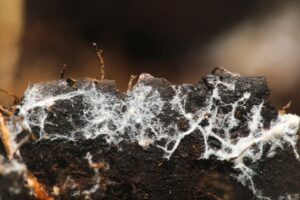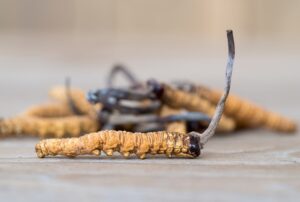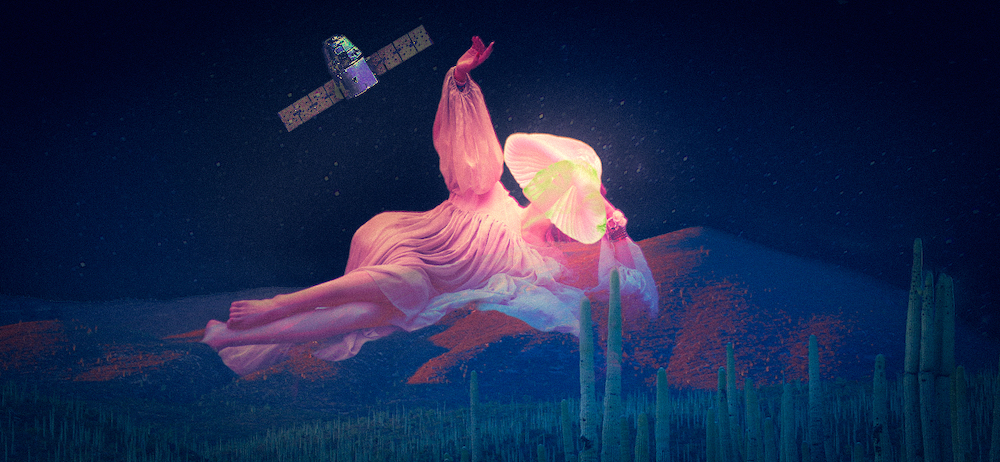In “The Hidden Life of Trees,” German author and forester Peter Wohlleben unearths the secret workings of the forest’s largest inhabitant, the mighty tree, peeling back the metaphorical layers of bark to see how this particular form of plantlife communicates, feels, and support life on Earth.
Shifting our gaze from the treetops back down to the ground, we find another, more often overlooked, forest inhabitant: the mushroom — a lifeform some mycologists say is linked more closely to the animal kingdom than the plant world.
While mushrooms are currently enjoying a surge in interest and popularity in the Western world thanks to their numerous health and wellness benefits, mycologists and other mushroom fans have long known that these fungi offer more than a nutritious meal. Mushrooms have a proven track record as environmental cleanup crews, as cancer fighters, as natural insecticides and more. And when it comes to their future potential, possible innovations seem endless. Think: mushroom “leather” car interiors, mushroom medical plasters and even mushrooms in space.
Mushroom benefits for our environment
Mycelium, the root system for fungi, often gets compared to the internet because of its ability to act as a superhighway for nutrients and information — feeding not only its own fruiting bodies (aka the mushroom) but also other plants along the network. But it isn’t only nutrients that travel along these mycelial threads connecting mushroom to tree to hedge, it’s signals, warnings, messages, and even toxins destined for other unwanted plantlife.

Most plants (around ninety percent) enjoy a symbiotic relationship with their neighbouring mushroom mycelial network, however, some plant life, like marigolds, eucalyptus, black walnut trees, and acacias engage in allelopathy — releasing chemicals into the soil that travel via the mycelial network and inhibit the growth of other nearby species competing for resources.
Famed mycologist Paul Stamets talks about the mycelial superhighway in his 2008 TED Talk, ‘Six Ways Mushrooms Can Save The World.” In it, he describes an experiment that turns the allelopathy process on its head. Knowing that mycelia are superconductors, Stamets and his team used them to pull e. Coli from runoff farm waste (the process also works on toxic materials from manufacturing waste) in a project that rehabilitated polluted waterways.
Only fungi can decompose this.
Fungi also clean up the planet in other ways.
Without them, says Jean-Marc Moncalvo, Ph.D., Senior Curator of Mycology at the Royal Ontario Museum and Associate Professor of Ecology and Evolutionary Biology at the University of Toronto, the environment would face difficulties in decomposing the lignin component of wood, the tough complex polymer that makes up plant cell walls.
“There is one group of fungi who are the only organisms with the capability to degrade lignin, which is a component of the wood,” he explains. “The major components of wood are lignin and cellulose. Cellulose is just a sugar chain. Many things can degrade sugar chains. But the lignin is a very, very tough molecule. It’s pretty much like the skeleton of the wood. Only fungi can decompose this.”
Mushrooms in space
The Kessler effect illustrates the problem of satellite overcrowding in our atmosphere. As we launch more and more satellites, the chances of them colliding, breaking off into smaller pieces and thus colliding even more frequently will eventually hit a critical mass. The result: a bunch of space junk that’s really difficult to clean up. The benefits of mushrooms could be the key to keeping it clean in space. Inspired by efforts to create satellites from cellulose fibre at Kyoto University, Max Justice, a cybersecurity expert who has worked closely with NASA, is currently working with mushroom mycelium to build satellite prototypes that could solve the space junk conundrum.

“Depending on the type of mycelium used, it can be more flexible than wood and/or stronger than wood, it’s lighter than wood, and naturally much more fire-retardant,” said Justice in an interview with Inverse, explaining that mycelium-based satellites are less likely to break into pieces while in orbit which is the central issue when it comes to coordinating cleanup efforts. “Mycelium is very light in weight, it naturally floats on water, it can withstand the cold of space where we don’t have to worry about cold welding, and we can add in fine strains of metal material which is used to transmit almost any type of signal. As you can see, there are numerous reasons why mycelium is quite suitable for our satellites in space, on land, and in the air on its way to space.”
And while the world’s major space and telecom agencies have been slow to respond to the problem, there’s at least one iconic space exploration brand backing the idea of mushroom benefits in space: Star Trek. In one of the franchise’s most recent iterations, Discovery, actor Anthony Rapp plays an astromycologist named for real life mycologist Paul Stamets. “When this happened,” says Moncalvo, “Paul was contacted by the crew and they said, ‘We love what you guys are doing so we’re going to name our astromycologist for you’ and Paul was so excited. He sent this email to his friends in the microbiology world like, ‘I’m an astromycologist now!’ And we were all thinking ‘Is he actually acting?’ It was very funny.”
Stamets, probably the best-known mycologist on the planet thanks to his series of engaging and enthusiastic mushroom-centric TED Talks, is an apt choice for a show about space exploration. He believes that because mushrooms don’t photosynthesize and don’t require light to grow, that they could very likely survive on other planets less-favoured by the sun. In fact, radiotrophic fungi can actually convert radiation into the energy they need to grow. These types of fungi have been found growing in the most unlikely places: the Antarctic mountains, in reactor cooling water at Chernobyl, and yes, on space stations.
Mushroom benefits in medicine and nutrition
Tonya Papanikolov, a Toronto-based holistic nutritionist, functional foods recipe developer, and the founder of the medicinal mushroom company Rainbo, wanted to learn more about why mushrooms were so revered in centuries-old cultures. “Mushrooms,” she explains, have “been used in traditional cultures in Asia for millennia. There’s a two to three thousand-year-old history of use in these places.” In order to better understand that, she looked to modern science. “I started diving into the science-substantiated clinical trials and all of the exciting stuff that’s coming out now that really explains the traditional use of these mushrooms,” she says.
Medicinal mushrooms are by no means a cure-all, but they absolutely offer so many different benefits to us as humans.
“I think the pandemic brought everybody into this state of, ‘Oh my gosh, my immune system!’ Everybody was thinking about it and talking about it and figuring out ways to boost their immune systems. And mushrooms are one of the best immune-boosting supplements or foods that you can find. Medicinal mushrooms are by no means a cure-all, but they absolutely offer so many different benefits to us as humans.”
It doesn’t take a lot of mushroom to reap the benefits of these superfoods. “One large shiitake in a meal a couple of times a week can provide substantial anti-inflammatory benefits,” says Papanikolov. “They have trace minerals like copper and zinc and selenium. There’s a fair amount of protein in these mushrooms and lots of B vitamins too.” The surprising catch is, you have to cook them (this, despite being sold the myth that raw vegetables are more nutritious).

“The medicinal ingredient that is in mushrooms is kind of locked within the chitin, which is the cell wall of the fungi,” Papanikolov explains. “And that requires heat or extraction. I always recommend cooking your mushrooms. That cooking or extracting is going to unlock the beta glucans from inside the chitin, which is going to allow it to travel through the digestive system and bind to different immune cells in the guts.”
The idea of “mushrooms as medicine” isn’t always easy to swallow in mycophobic cultures like North America where the benefits of mushrooms are not as integrated into our lives like they are in Asia and parts of Europe. The scientific community, however, is working hard to capture our imaginations. One 2015 study showed that the application of an extract made from Antrodia camphorata significantly accelerated wound healing and closure while also decreasing scarring and inflammation. The results have been replicated in studies done as recently as this year.
That’s also one of the beauties of this material, you can tailor the properties to suit various different applications.
Mushrooms, says Dr. Alexander Bismarck, Professor of Materials Chemistry at the University of Vienna, could also be used for wound coverage. “It would keep viruses and bacteria away from the wound. It would keep the wound moist but remove all the other stuff that you don’t want in the wound, [and] it has antibacterial properties. That’s also one of the beauties of this material, you can tailor the properties to suit various different applications.”
If the power of healing a paper cut fails to convince, consider the fact that the Journal of Antibiotics states that “the role of fungi in the production of antibiotics and other drugs for treatment of non-infective diseases has been dramatic.” This extends even to serious diseases like cancer.
One study in the Global Advances In Health And Medicine journal hypothesized that “the documented immune modulation activity of the turkey tail mushrooms enhanced the ability of the patient’s immune system to discover the tumor, thereby increasing the effectiveness of the chemotherapy” in a subject with advanced stage breast cancer. It sounds surprising but in truth, the pharmaceutical industry has been harnessing the power of fungi ever since Alexander Fleming discovered penicillin in 1928. Now fungi are used in making antibiotics, anti-cancer drugs, cholesterol and ergosterol synthesis inhibitors, psychotropic drugs, immunosuppressants and fungicides.
“The discovery of penicillin radically changed the face of modern medicine in the early 1900s,” says Papanikolov. “We rely on them so heavily for medicine. I think it’s just shifting our idea that we can use fungi in a preventative way.”
Surprise, it’s a mushroom
When is an ant not an ant? When forty percent of its body has been colonized by mushrooms. This is exactly what happens when Ophiocordyceps crosses paths with a carpenter ant. This “zombie fungi” grows a mycelial network inside the body of the ant, taking control over its motor functions in order to spread its spores. In the end, the ant’s body is consumed by the fungi and a tiny mushroom grows out of its head — the birthplace of more spores (and the death knell for more ants).

If a mushroom can spring from the head of an ant, can it also come back from the dead? The answer, it would seem, is yes. Known for their love of damp, dark places, it might seem surprising that fungi can be found in dry, sunny deserts. In training one of his students to do molecular work and mushroom DNA sequencing, Moncalvo was fascinated to find that a preserved sample that was over a century old contained spores that still had the ability to germinate.
“We typically place samples on a gel to look at and what you should see is a band of extracted DNA. But as soon as the organ is dead, you don’t see one big, bright, white band. What your gel will detect is a fragment of DNA which are maybe 500 or 1000 basepair long. It’s all broken, degraded.” When Moncalvo and his student looked at the gel, however, the DNA was intact.
“So I think, well, if the DNA is intact then let’s take some spores and try to grow them. We placed the spore in a petri dish, in a wet, nutritious environment and the spore germinated. And I was just like, ‘Of course this is from the desert so it should be ready to go at any time when the conditions are there.’ You can have hundreds of years between two rains in the desert over geological time,” explains Moncalvo. “They are absolutely perfectly adapted to this extreme environment.”
Mushrooms, but make it fashion
When Stamets appeared on stage for a TEDMED talk in 2011, he did so wearing a hat made of mushroom. His spongy Amadou sartorial statement was a far cry from the sleek mushroom leather called Mylo currently being manufactured by Bolt Threads and put to use by internationally renowned brands like Stella McCartney, Lululemon, and Adidas. Still, it foreshadowed a trend.
Imagine you were a builder and your brick had its own mortar around it already.
Bismarck describes mushroom polymers like Mylo as strong materials that carry their own matrix. “Imagine you were a builder and your brick had its own mortar around it already. So you just need to lay them up,” he explains.
In certain respects, mushroom-based materials can be more sustainable and accessible. “They can be found on nearly every continent,” says Bismarck. “They grow under whatever conditions. You don’t need a lot of space. You can use vertical farming instead of flat farming. In that respect, it’s much more CO2 neutral and sustainable than any other material you would have.” The problem presents itself in terms of scale. A product’s environmental friendliness can only make an impact when it’s accessible to a large number of consumers. Here, exclusivity is a drawback. Still, for products that a consumer is investing in long term (think: a mushroom leather jacket or an automobile interior upholstered in mushroom leather) the sustainability factor maintains its appeal.
Fungi, however, have worked their way into the design and planning worlds via other industries. British mycologist Lynne Boddy built a scale model of England from soil. Fungal colonies cultivated on wood stood in for the country’s major cities. At a rapid rate, mycelia grew from one block to another, replicating the path of Britain’s highway system.
Mushrooms, says Papanikolov, “are environmental guardians” and modern science still has a long way to go in terms of understanding them. “[They] made me realize that our partnership with this species and kingdom is really imperative to the health of our planet and the future of our planet,” she adds. “We have so much to learn from them.”

